My Mother, Hedwig Anuar
The daughter of Hedwig Anuar reveals a side to the former director of the National Library that not many people know.
By Shirin Aroozoo
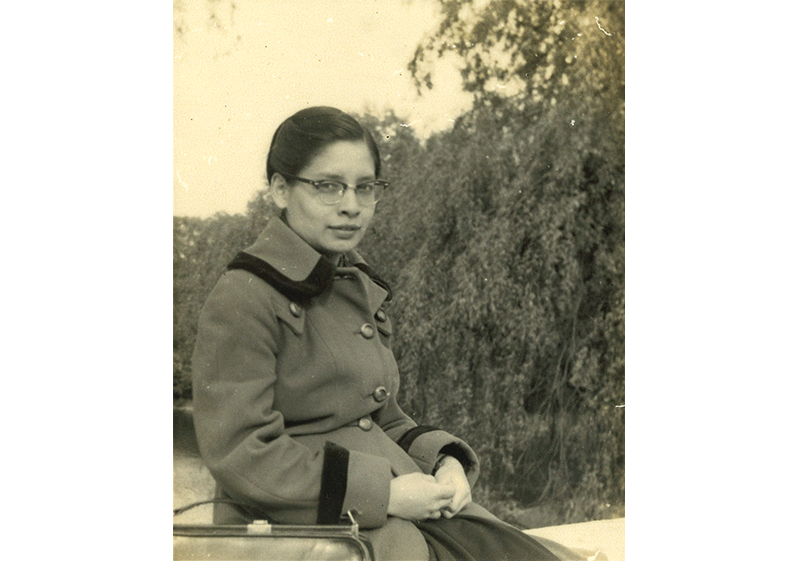
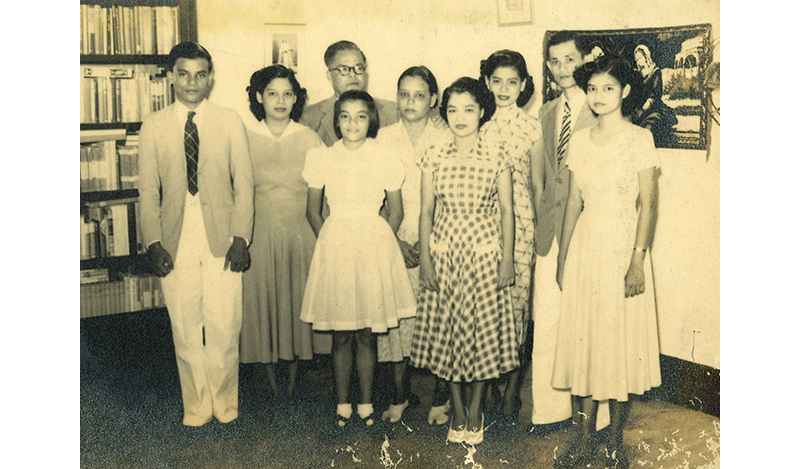
Books have always been a big part of my life. I was born in 1962 and one of my earliest childhood memories is of my mother reading a bedtime story or singing a nursery rhyme to me almost every night.
As the director of the National Library, she would inevitably bring home a wide range of books for me to read. She started with picture books when I was younger, and as I grew older, she brought home books by Judy Blume and also the Nancy Drew series. Looking back, many of the books that she encouraged me to read had women as the main protagonists. I think this influenced my outlook, teaching me that women are just as capable as men and that we can achieve anything if we put our minds to it.
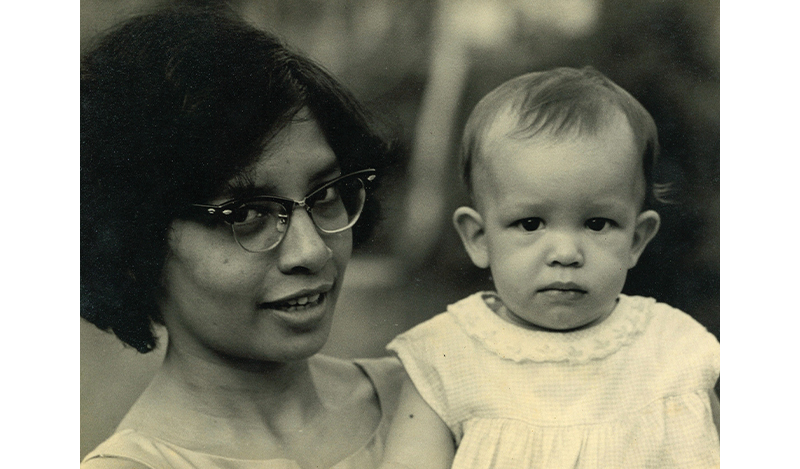
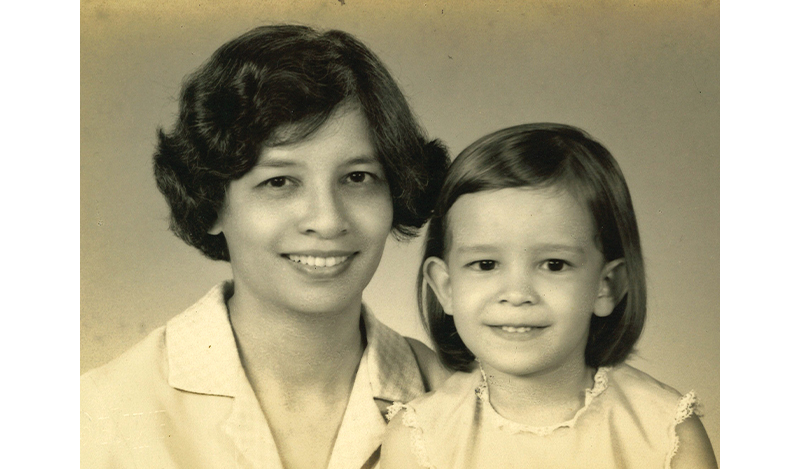
If my mother had to work late, I would spend time in the library browsing the shelves and checking out all the new arrivals displayed on a table. I also enjoyed my time in the children’s section with the staff, who allowed me to stand behind the counter and stamp the due date on the library slips in the books. The staff were all very caring and I am still in touch with many of them to this day.
I would also attend storytelling sessions at the National Library. We sat on the floor cushions, listening enthralled as the librarians brought the books to life. I remember participating in a fancy dress fashion show at the library where we had to dress up as book characters. I went as a Hawaiian girl, and my mother ordered a fresh flower lei and fresh flowers for my hair to go with the costume.
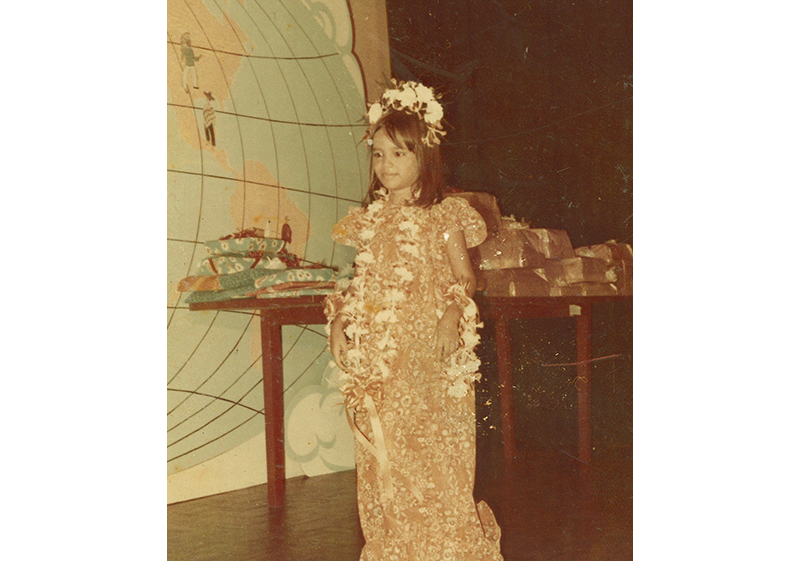
The Teen Years
When I was in secondary school and studying literature, my mother would spend time with me sharing her passion for poetry and Shakespeare. Her love of literature and the written word knew no boundaries. Our home was filled with books of all topics, ranging from politics, the arts and poetry to architecture, feminism, autobiographies and more. These were organised by genre so my mother could easily access what she wanted to read.
Later, when I started dating, my mother would bring home books on sex and relationships. I think, as with most Asian parents, this was a topic that was difficult to discuss so her way of educating me was through books. After reading these books, I would then talk about these topics with my mother.
The former red-brick National Library building on Stamford Road was like a second home for us. When the building was torn down, my mother could not drive by it for many years as it was too painful. It was then that I realised how important the National Library was to her. It was a part of her and when it was demolished, it was as if a small part of her had died.

In addition to books, my mother also introduced me to the arts. We went to countless local theatre productions at the Drama Centre in Fort Canning and other various small venues because she felt that it was important to support local playwrights and theatre groups to build a Singaporean identity. She would also purchase all the local publications of fiction, poetry and plays to support the local arts scene. We also went to the ballet at the National Theatre where I was enthralled by the performances of the likes of Margot Fonteyn and Mikhail Baryshnikov when they came to Singapore.
We watched the Singapore Symphony Orchestra perform at the Singapore Conference Hall and Victoria Theatre when the orchestra was just starting up. My mother enjoyed all genres of music, including, but not limited to, jazz, baroque and world music. Movies were another favourite pastime and her preferred genres included comedy, drama and musicals. She did not like horror or science fiction though.
A Love for Travel
My mother travelled a fair bit for work, attending conferences all over the world (where she would often be in the minority as most of the delegates were men). I heard about all the wonderful countries she travelled to, such as Papua New Guinea, New Zealand, Indonesia, Europe, the United States and Japan. She would often bring back a doll from each country that she visited as I loved collecting dolls when I was growing up.
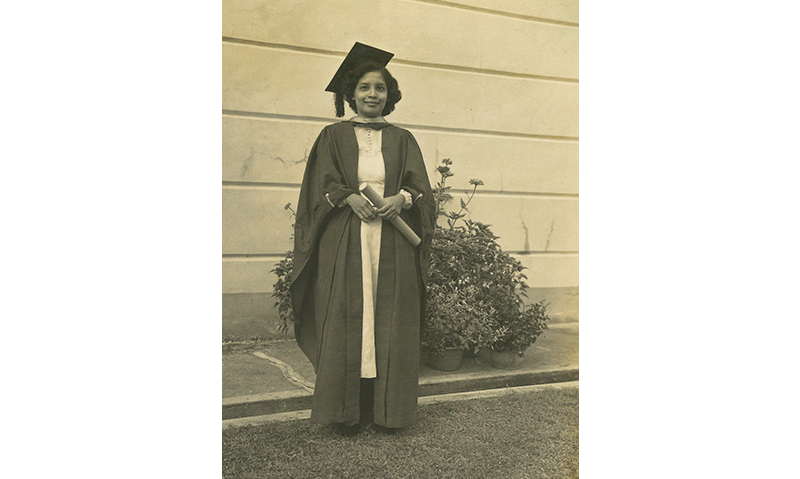
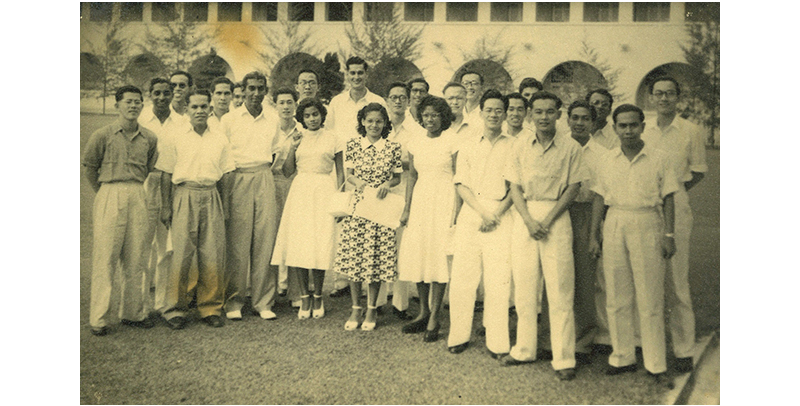
She would also bring home books on the countries she visited so that she could share her experiences with me. Hearing about all these places as a child made it all sound so exciting and exotic to me. As a result of her travels, she had friends from all over the world and I got to meet many of them, an experience that exposed me to lots of different cultures.
After hearing about the different countries, I, too, wanted to see the world. From about the age of 8, my mother and I would travel somewhere almost every year during the school holidays. Trips ranged from a simple jaunt to Cameron Highlands or to a beach in Bali. At the age of 10, I went to the United Kingdom for the first time, accompanying my mother who had a conference to attend. (My mother left me with my aunt and cousins for a few days while the conference was taking place).
As I grew older, the idea of living abroad kept returning and I decided that I wanted to study overseas. After much negotiation with my mother, I left Singapore at the age of 17 for the United States. After becoming a mother myself, I realised how difficult it must have been for her to let me go at a relatively young age. Despite objections from concerned family and friends, I was allowed to go as my mother trusted me. I only found out much later that it was quite a financial burden on her and she had to get a personal loan from a friend to help me finance my dream of living and studying abroad. My mother’s sole concern was for my happiness. She always told me: “As long as you are happy, I am happy.”
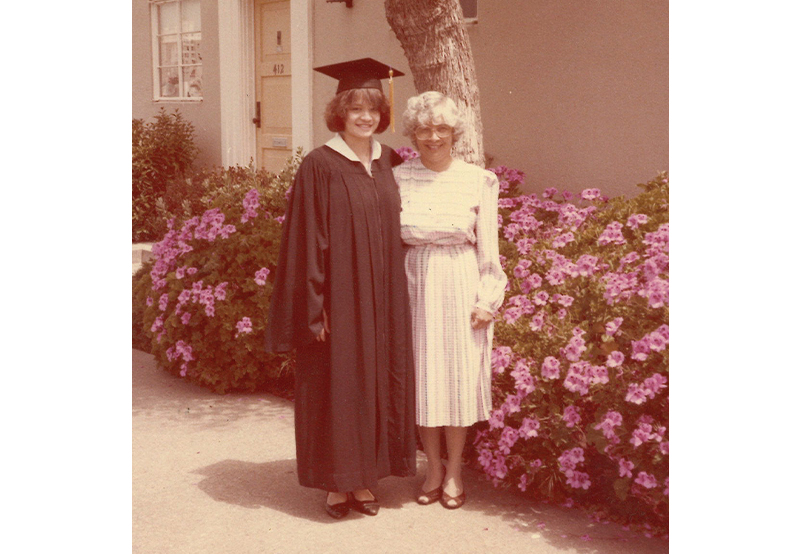
My mother’s parenting style was ahead of her time and very forward-thinking. It was very important to her that I learn to be independent and not have to depend on anyone. I believe this is because she was a divorced woman in the 1960s and she had to raise me single-handedly. She was extremely proud and independent as a result. Her good friend Daisy Vaithilingam told me that when my mother was about to give birth to me at the hospital, she told Daisy to go home and that she would be fine. My mother gave birth to me alone with no family or friends around.

A Long-Distance Relationship
I decided to migrate to Canada in 1989. Once again, my mother supported me and encouraged me to give it a go, which is how I ended up living abroad for nearly 20 years. While I was away, she would call me regularly, send me flowers on my birthday and visit almost every other year. I also came back regularly to visit her. Despite the distance apart over the years, we still managed to maintain a very close relationship through letters, visits and weekly phone calls.
When I got married in 1990, my mother was thrilled and, I think, somewhat relieved that there was now someone else to take care of me. She always said it did not matter who I married. Whether he was white, yellow, or black was irrelevant, as long as he loved and took good care of me.
In recognition of her many contributions, my mother was named Woman of the Year by Her World magazine in 1993. I was the first person she called when she got news of the award and I came back to surprise her at the award ceremony. In 1997, I was expecting my son and my mother visited me in Toronto in the depths of winter to witness the birth of her only grandson. She stayed for two months to help me. Throughout my life, my mother has always been around to support me whenever I needed her and likewise, I have tried to do the same.
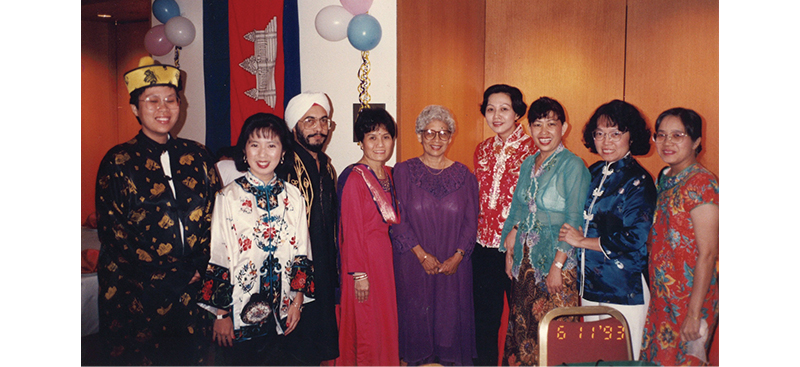
I returned to Singapore at the end of 2003 after being away for almost two decades. I could sense that she was getting forgetful when we spoke on the phone and something just seemed amiss. It was a difficult decision but I knew that I would never forgive myself if anything happened to my mother while I was away.
Back in Singapore
In March 2004, my mother was officially diagnosed with Alzheimer’s disease. She was 75 at the time. In her usual style, she borrowed and bought books on the disease to learn how to manage it. She was determined to fight it as best as she could. Fortunately, the disease progressed slowly but we had many challenging moments.
One of the hardest things to do was to make my mother give up driving. She would forget where she had parked the car and often got lost. With the cost of owning a car being quite exorbitant in Singapore, she reluctantly gave up driving. The next big hurdle was convincing my mother to get a live-in helper as she had lived alone for many years. We needed a helper for her because she was forgetting to eat, and her safety and health were becoming a concern. I was so worried when I first brought our helper home but she is wonderful and is still with us today.

The last challenge was the most emotional for me as I made the very difficult decision to sell the family home in 2021. This was a house that we had lived in for 50 years. As I drove to pass the keys to the new owners, I broke down in the car sobbing as it had been a wonderful happy home with many memories and I knew that my mother would never have wanted to move out. It was one of the most difficult decisions I have had to make since returning to Singapore.
In a 1993 interview for Her World magazine, my mother was asked what she feared on turning 65 and living alone. She said she feared having a disabling illness like cancer or suffering from a stroke. “I’m not worried about dying. It’s how you die. Like everyone else, I would like a quick and easy death. Preferably in my sleep. That’s the best way to go, isn’t it? I wouldn’t like a long period of suffering and pain or a crippling kind of disease. I wouldn’t want to be a burden on anybody. I don’t believe in being hooked up to a machine like a vegetable. I don’t call that living at all. I would rather be dead. When I die, I would die happy in the sense that I have achieved so much and I have produced two wonderful children.”
Today, her Alzheimer’s is at an advanced stage and she needs two helpers to care for her. I am glad I have the ability to repay her for everything she has done for me, though of course a daughter can never truly repay a mother for all the sacrifices made over a lifetime.
My mother inculcated in me the value of hard work, travel, culture, family, and most of all, having an appreciation and respect for people from all walks of life. I am very blessed to have such an amazing mother who has led an incredibly full and colourful life. She has had such a profound impact on me, and on the generations of Singaporeans who have ever used the National Library.
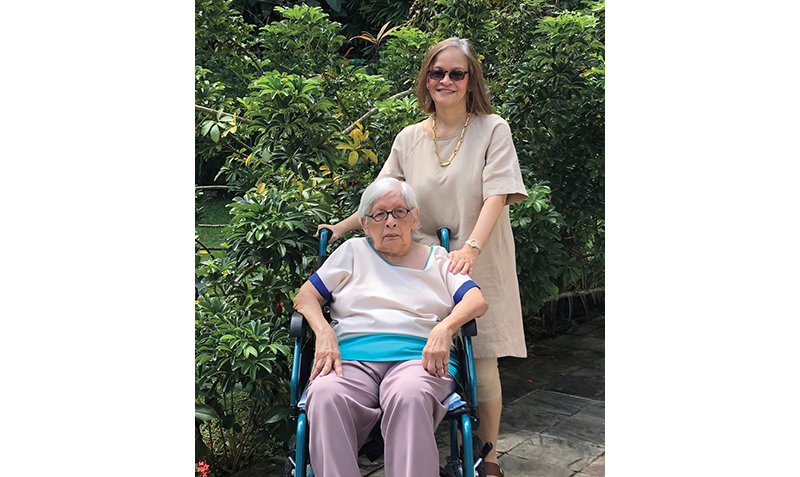
Shirin Aroozoo is the daughter of Hedwig Anuar, who was the director of the National Library from 1965 to 1988.

